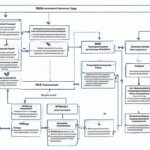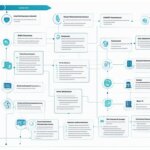Table of Contents
Welcome to our quick guide on RMA (Return Merchandise Authorization). In this article, we will explore the definition of RMA, the RMA process, and the importance of RMA for businesses and customers.
A return merchandise authorization (RMA) is a numbered authorization provided by a merchant to allow the return of a product. It serves as a crucial part of the customer return process, determining the validity of a return and guiding customers on how to proceed. RMAs are essential for businesses to analyze the financial impact of returns and assess customer satisfaction.
Obtaining an RMA is equally important for customers as it ensures their return is accepted and provides protection against future returns and return fraud. Without an RMA, a return may be refused or subject to restocking fees. By obtaining an RMA, customers can ensure a smooth return process and have peace of mind.
In the next sections of this guide, we will dive deeper into how the RMA process works, the importance of obtaining an RMA, and best practices for managing RMA. So, let’s get started!
How Does a Return Merchandise Authorization (RMA) Work?
When it comes to returning a product, understanding the process behind a Return Merchandise Authorization (RMA) is crucial. Let’s explore how an RMA works and why it’s essential for a successful return.
The first step in an RMA process is obtaining an RMA number, which is provided by the customer service department when processing a return. This unique identifier ensures that the return is properly tracked and managed.
To initiate a return, the customer is typically required to fill out a return authorization form. This form outlines the return policies, providing important information about eligibility criteria, restocking fees, and any specific instructions for packaging and shipping the product back to the retailer. Additionally, the form may request feedback on the reason for the return, helping the merchant gather valuable insights into customer satisfaction and product quality.
Without an RMA number, a return may be refused, or the customer may be subject to a restocking fee. It is crucial to follow the designated RMA process to ensure a smooth and hassle-free return experience.
Table: Key Elements of the Return Authorization Form
| Information | Details |
|---|---|
| Return Policies | Clearly outline the conditions for returning a product, including eligibility criteria and restocking fees. |
| Packaging and Shipping Instructions | Provide step-by-step instructions on how to package and ship the product back to the retailer, ensuring it is protected during transit. |
| Reason for Return Feedback | Request customer feedback on the reason for the return, helping the merchant gather valuable insights and improve product quality. |
The RMA process is particularly important for software-related products. Many merchants only accept returns for software if the packaging is unopened, helping prevent piracy and ensuring the integrity of the product.
By following the RMA process and obtaining an RMA number, customers can ensure that their return is accepted and processed efficiently, thus minimizing any potential complications or delays. Additionally, merchants can use the RMA number to track the progress of returns and address any errors or issues that may arise.
Importance of Obtaining an RMA
RMA numbers play a vital role in the analysis of RMA processes, ensuring customer satisfaction, and providing protection against return fraud. When customers initiate a return, obtaining an RMA number is crucial to ensure their return is accurately processed and accepted.
One of the key benefits of RMA numbers is their ability to facilitate the analysis of RMA processes. By tracking the financial effects of returns through RMA numbers, merchants can gain valuable insights into the impact of returns on their bottom line. This analysis helps businesses make informed decisions and implement strategies to improve their return policies and minimize financial losses.
Furthermore, RMA numbers are essential in assessing customer satisfaction. By correlating RMA numbers with customer feedback and return reasons, merchants can identify areas for improvement and enhance the overall customer experience. This information allows businesses to address any recurring issues, thereby building stronger relationships with their customers.
Another significant advantage of RMA numbers is their role in protecting against return fraud. By assigning a unique RMA number to each return, merchants can verify the authenticity of the return request and prevent unauthorized or deceptive returns. This protects businesses from financial losses and safeguards their reputation.
Moreover, RMA numbers enable merchants to track the progress of returns and address any errors or issues that may arise. Customers can use the RMA number as a reference when they inquire about the status of their return, ensuring efficient and effective communication between the customer and the merchant.
In summary, obtaining an RMA number is of utmost importance in the RMA process. It allows merchants to analyze the financial impact of returns, assess customer satisfaction, and protect against return fraud. RMA numbers also enable merchants to track returns and address any inquiries or issues promptly. By prioritizing the acquisition of an RMA number, businesses can ensure a streamlined return process and enhance customer trust and loyalty.
| Benefits of Obtaining an RMA |
|---|
| Analysis of RMA processes |
| Assessment of customer satisfaction |
| Protection against return fraud |
| Tracking returns and addressing issues |

Returning Goods and Defective Products
The return process plays a crucial role in addressing customer concerns and ensuring satisfaction. When a customer encounters an issue with a product, they can initiate the return by contacting the technical support office via phone or email. This initiation step allows the customer to begin the return process and seek assistance from the appropriate personnel.
Upon contacting the technical support office, a trained technician evaluates the product to determine the cause of the issue. This evaluation is essential in assessing whether the product is defective or if there is another underlying problem, such as improper installation or user error. By conducting a thorough product evaluation, the technician can make an informed decision on the next course of action.
“Our technicians are skilled in identifying and diagnosing issues with our products. Through careful evaluation, we determine if the problem is due to a defect or other factors, ensuring an accurate assessment of the product’s condition.”
If the technician determines that the product is indeed defective, they will initiate the process of issuing a Return Merchandise Authorization (RMA). An RMA serves as an official authorization to return the product and is a crucial step in facilitating the return process. It provides the necessary documentation for tracking and managing the return and ensures that the customer’s request is properly recognized and attended to.
Once the customer receives the RMA, they can begin preparing the return shipment. This involves securely packaging the product to prevent damage during transit and ensuring that the RMA number is prominently displayed on the package. Including the RMA number on the package helps streamline the return process by allowing the manufacturer to quickly identify and track the returned product.
With the package prepared and the RMA number clearly visible, the customer can then send the product back to the manufacturer. This action signifies the completion of the return process, as the product is now en route to its original source. It is essential for customers to carefully follow the instructions provided and utilize appropriate shipping methods to ensure a smooth return journey.
Evaluating Defective Products: Ensuring Quality and Customer Satisfaction
Product evaluation is a critical step in the return process, as it helps determine the cause of the issue and ensures that customers are provided with appropriate solutions. By identifying defective products, manufacturers can address quality concerns, make improvements, and uphold customer satisfaction. Taking proactive measures to evaluate defective products demonstrates a commitment to excellence and reinforces trust between the manufacturer and the customer.
Key Components of an Efficient RMA Process
An efficient RMA (Return Merchandise Authorization) process entails several key components that contribute to a streamlined and positive experience for both customers and businesses. These components include:
- RMA Forms: RMA forms play a vital role in gathering essential information about the return. These forms typically collect customer contact details, product information, and the reason for return. By capturing detailed information, RMA forms facilitate effective communication and ensure that all necessary data is available for processing the return smoothly.
- RMA Numbers: RMA numbers are unique identifiers assigned to each return request. These numbers serve as reference points for easy tracking and management of returns. By assigning distinct RMA numbers to each return, businesses can efficiently monitor the progress of returns, prevent any mix-ups, and provide accurate updates to customers.
- RMA Process Workflow: A well-defined RMA process workflow outlines the steps involved in the return process, from customer return initiation to company processing. This workflow serves as a guide, ensuring consistency and clarity at each stage of the return process. By establishing a standardized workflow, businesses can minimize errors, enhance efficiency, and improve customer satisfaction.
By incorporating these key components into their RMA processes, businesses can effectively manage returns, provide prompt resolutions, and optimize overall customer experience.
Example RMA Form:
| Customer Details | Product Information | Reason for Return |
|---|---|---|
| Name: [customer name] | Product Name: [product name] | Reason: [reason for return] |
| Email: [customer email] | Serial Number: [serial number] | Additional Comments: [comments] |
| Contact Number: [contact number] | Date of Purchase: [purchase date] |
Best Practices for Managing RMA
When it comes to managing return merchandise authorization (RMA), implementing best practices is key to ensuring a smooth and efficient process. By following these guidelines, businesses can maximize customer satisfaction and minimize return-related challenges.
Establish a Clear Return Policy
An essential component of effective RMA management is establishing a clear and transparent return policy. This policy should clearly communicate eligibility criteria, return timeframes, and any associated fees or restocking charges. A well-defined return policy sets expectations for both customers and your team, reducing confusion and minimizing potential disputes.
Utilize RMA Processing Software
RMA processing software is a valuable tool that can streamline and automate key aspects of the return process. By leveraging software specifically designed for managing RMAs, businesses can track and manage return requests more efficiently, reducing errors and saving valuable time. From generating unique RMA numbers to tracking return progress, software solutions ensure a more organized and efficient workflow.
Provide Excellent Customer Service
Delivering excellent customer service is crucial when it comes to RMA management. Promptly respond to customer inquiries and provide clear instructions on how to initiate the return process. Be empathetic and understanding, actively listening to customer concerns and offering solutions that align with your return policy. By building positive customer relationships through exceptional service, you can enhance brand loyalty and customer satisfaction.
Analyze Returns Data
Analyzing returns data is essential for identifying trends, addressing potential issues, and making informed decisions to reduce returns and improve overall customer satisfaction. Regularly review return reasons, product return rates, and customer feedback to gain valuable insights. Use this data to refine your return policy, address common issues, and optimize your product offerings to minimize returns in the future.
| Best Practices for Managing RMA: |
|---|
| Establish a Clear Return Policy |
| Utilize RMA Processing Software |
| Provide Excellent Customer Service |
| Analyze Returns Data |
RAM FAQs (Return Authorization and Management Frequently Asked Questions)
Are you confused about the RMA process? Here are some frequently asked questions to help clarify your doubts.
What is an RMA Number?
An RMA Number is a unique identifier assigned to a return request. It allows the merchant to track and manage the return efficiently. When requesting a return, make sure to obtain an RMA Number from the customer service department to ensure a smooth return process.
What is an RMA Request?
An RMA Request is a formal appeal made by a customer to return a product. It is the first step in initiating a return. When you have a problem with a product and want to return it, you need to submit an RMA Request to the merchant. The merchant will review your request and provide further instructions.
What is an RMA Label?
An RMA Label is a label provided by the company to facilitate the return process. It contains all the necessary information, such as the RMA Number and return address. When returning a product, ensure you affix the RMA Label prominently on the package to ensure proper identification and handling.
Understanding these key terms will help you navigate the RMA process with confidence and ensure a hassle-free return experience.
Note: Ensure that you follow the specific instructions provided by the merchant for the RMA process. Each company may have their own unique policies and procedures.
FAQ
What is a Return Merchandise Authorization (RMA)?
A Return Merchandise Authorization (RMA) is a numbered authorization provided by a merchant to allow the return of a product. It is an essential part of the customer return process, determining whether a return is valid and guiding the customer on how to proceed.
How does an RMA work?
When processing a return, the customer service department assigns a unique RMA number. The return authorization form outlines the return policies and provides instructions on how to package and ship the product back to the retailer. Without an RMA, a return may be refused or subject to a restocking fee.
Why is obtaining an RMA important?
Obtaining an RMA is crucial for customers to ensure their return is accepted and to protect against further returns and return fraud. It is also important for businesses to analyze the financial impact of returns and assess customer satisfaction.
How does the return process work for defective products?
The return process may involve the customer initiating the return by calling or emailing the technical support office. A technician evaluates whether the product is defective or if there is another issue, such as improper installation. If the product is deemed defective, an RMA is issued. The customer then prepares the return shipment, ensuring the RMA number is clearly visible on the package. Finally, the customer sends the product back to the manufacturer, completing the return process.
What are the key components of an efficient RMA process?
An efficient RMA process includes RMA forms, which collect essential information about the return, such as customer contact details, product information, and reason for return. RMA numbers are unique identifiers assigned to each return request, allowing for easy tracking and management. A well-defined RMA process workflow outlines the steps from customer return initiation to company processing, ensuring a streamlined and positive experience for both parties.
What are the best practices for managing RMA?
Best practices for managing RMA include establishing a clear return policy that communicates eligibility criteria and associated fees. Utilizing RMA processing software can automate key aspects of the return process, reducing errors and improving efficiency. Providing excellent customer service is crucial for handling customer inquiries and issues related to returns. Analyzing returns data, such as return reasons and product return rates, helps identify trends, address potential issues, and make informed decisions to reduce returns and improve customer satisfaction.
What are some common FAQs about RMA?
Common FAQs about RMA include clarifying the definition of an RMA Number, which is a unique identifier assigned to a return request. An RMA Request is a formal appeal made by a customer to return a product, and an RMA Label is a label provided by the company to facilitate the return process. These FAQs provide further insights into the RMA process and clarify common questions customers may have.













